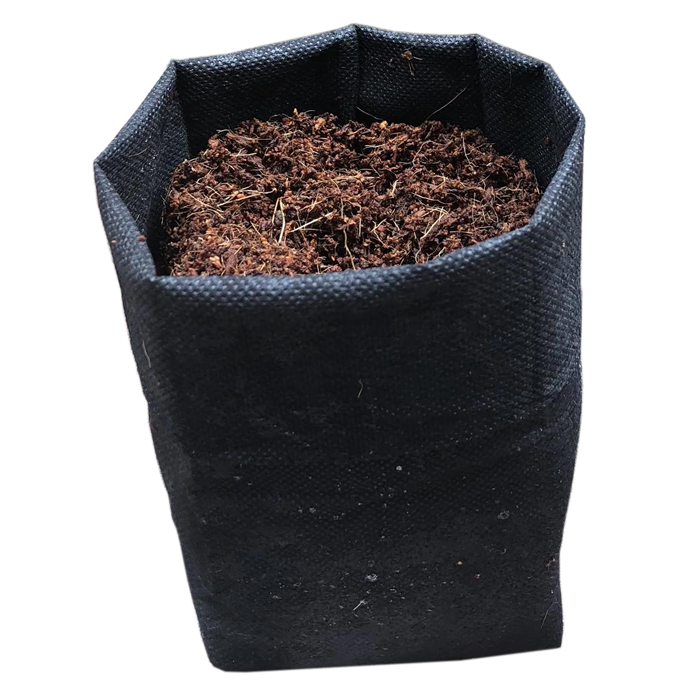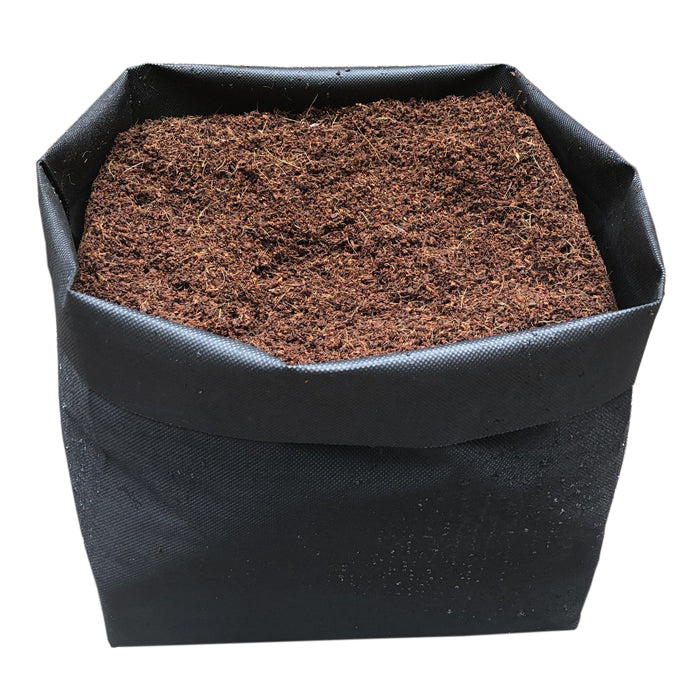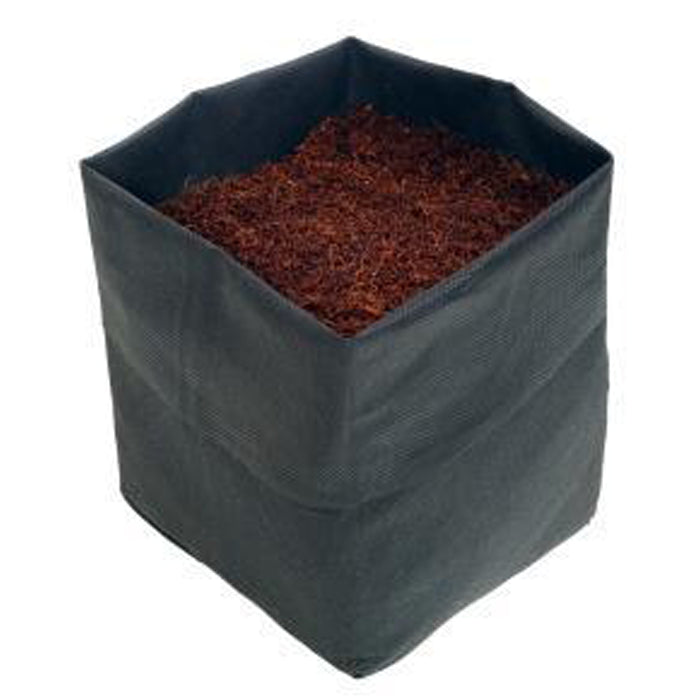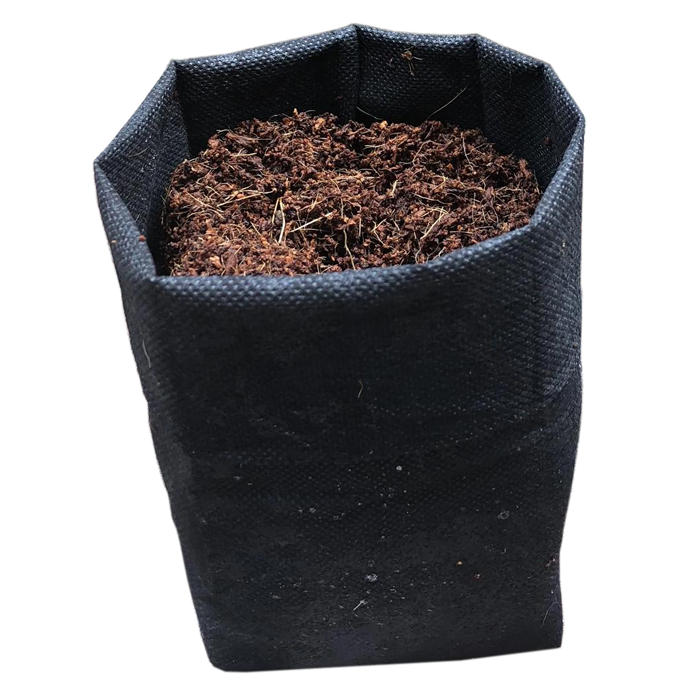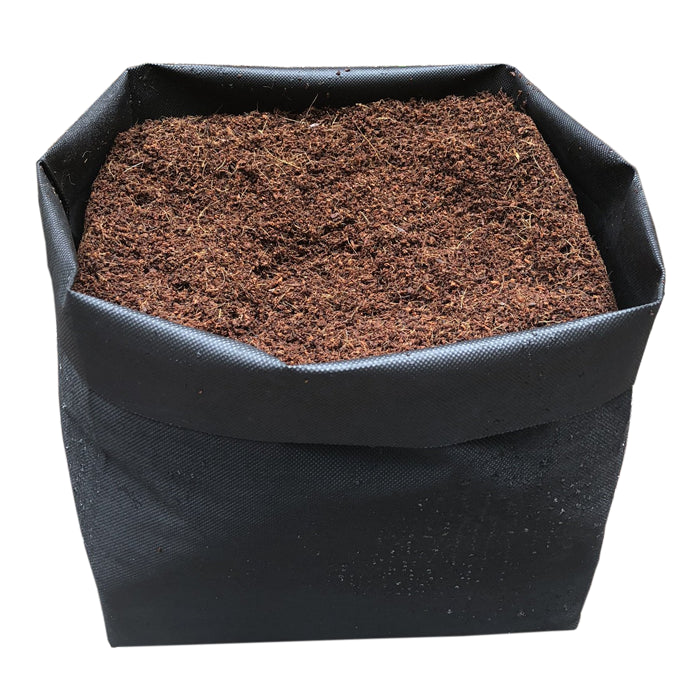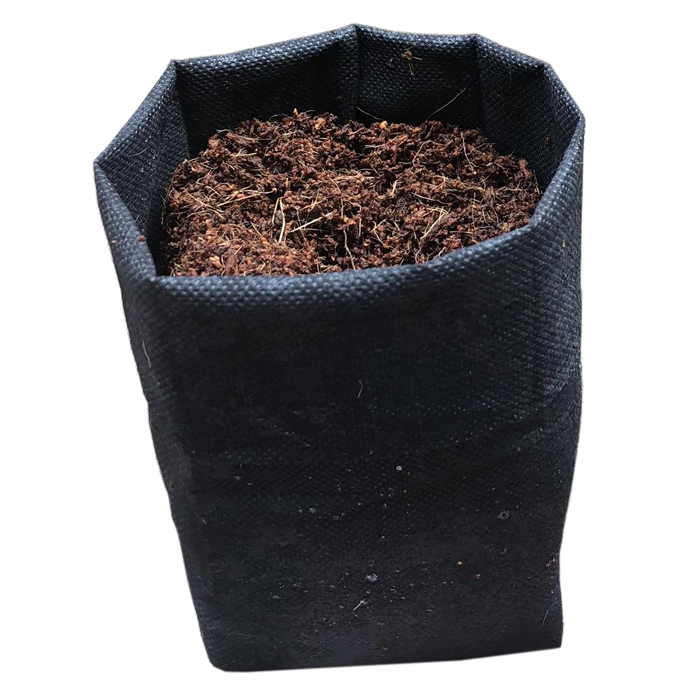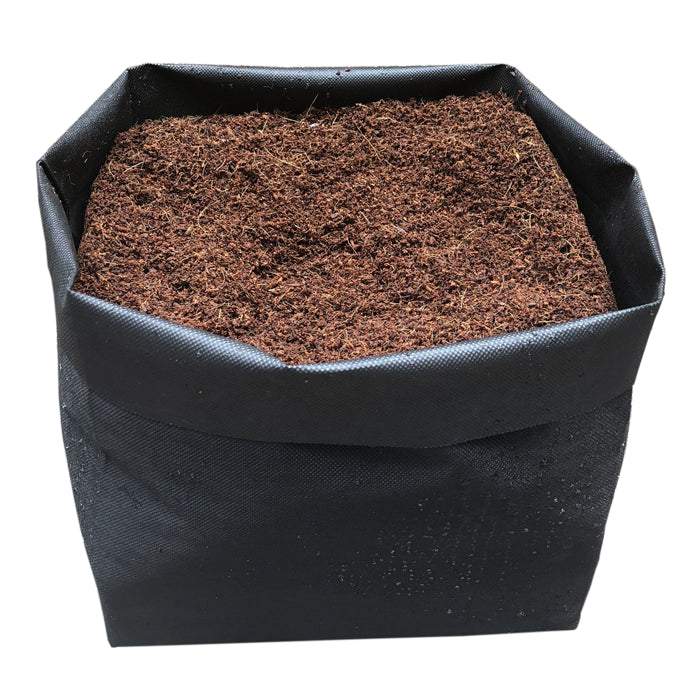The Coco Depot GroEzy Expandable Pots Questions & Answers
How to expand compressed coco blocks?
Get creative with your expansion, there are so many variables to the process, so figure what works best for you! there is no perfect math to the amount of water required, coco is a natural material and hydration needs will vary by material quality.
Method 1: Outdoors with yard space, spray water on the block/blocks and as they fluff, break it down with a shovel and keep spraying water till fully hydrates.
Method 2: Indoors with limited space, put them in a closed container, flood them with approximately 5 gallon/block, blocks will expand gradually, and once all water is absorbed stops expansion, add more water to expand the rest.
Method 3: Expanding a full pallet, stack them in a 10x10 area, spray/hose them down till all the blocks are wet, leave for 20-30 minutes, hose they down again and again till all the blocks have expanded.
Note: Run shovel or hand through the expanded coco to ensure there are no chunks left, compressed chunks in pots can cause issues after planting.
Whats buffered coco? And whats the difference between un-buffered and buffered coco?
In simple words, Buffering is the process by which we avoid nutrient-lockout by the grow media, which impacts nutrient availability in the root zone. By buffering, you stabilize the grow media by modifying few aspects of the media such as pH or ability to hold nutrients. This means that they attract what are known as cations. Cations are positively charges ions. The sum total of negatively charged ions are known collectively as the cation exchange capacity or “CEC”. Knowing the CEC of a media will let you know how much of any particular nutrient the media can absorb before it is leached out. It is important to know however, what the nutrient needs of your particular crop are before setting about adjusting the CEC of any media.
The CEC of coco coir, if un-buffered can tend to be too high in sodium (Na) and potassium (K) and too low in Calcium (Ca) and Magnesium (Mg). Potassium is good for plant growth, right? Well you can of course have too much of a good thing. Too much K will result in too little Mg being available for your crops. Too much Na is just a bad situation all the way around, especially to young and bare root plants. Coco coir, being of the coconut tree can have a very high level of salts. They often grow along coasts and absorb salt from the water that they grow by.
The level of salts in a media are measured usually as a level of total dissolved salts (TDS) or in units of electrical conductivity (EC, not to be confused with CEC). Of course each crop has different needs, but in general, most media should have an EC of less than 1.0 (in hydroponics applications, EC can be up to 2.0) so that the levels of salts do not interfere with proper nutrient uptake or plant function. If a media is under sodic conditions (high EC, high sodium), it can be toxic to most plants. In soils, high EC correspond to poor soil structure and poor drainage.
Whether or not to buffer a coco coir media also depends on the application. Using coco coir pots in soil is a different situation than using them hydroponically. When growing in soil, it may not be necessary to buffer at all, as the soil itself may be able to buffer the media. Using coco coir in a hydroponic or soilless situation will likely require buffering, or using a pre-buffered media.
Is buffering same as rinsing?
The words “buffer” and “rinse” in regards to coco coir are sometimes used synonymously. It should be noted that simply rinsing coco coir with water, will not serve to buffer it. Rinsing the coco coir may well remove some of the water-soluble salts that are in it, but it will not by itself alter the CEC of the coir. Additional nutrients will need to be added in order to do so.
Can I reuse coco coir?
Many growers, in an effort to save money, may consider re-using coco coir media, as it holds up fairly well to most growing conditions. Coco coir loses to some degree, its ability to hold water and nutrients after it has been used through an initial growth cycle. While we recommend reusing in your garden, definitely not for cash-crop cultivation.
HOW DO I KNOW THE DIFFERENCE BETWEEN DIFFERENT GRADES OF COCO PEAT?
Coco peat grades vary mainly based on EC content and particle/husk size.
For EC, high EC typically means EC measure is >1.0 in the material. While low EC means below <1.0. Though low EC the preference nowadays is below 0.7.
For size, the variations are fines 0-4mm, regular 2-8mm and coarse >10mm.
HOW DO I KNOW WHICH COCO IS GOOD FOR ME?
There are too many variables to this answer, mainly starts with what are trying to grow. Coco peat as a grow media can be used to grow all types of plants, and depending on the crop type, the quality of the coco to be used varies. That's why its important to know the quality or specs for the crop you are growing. Low EC coco is preferred by growers who want to be in control of the nutrients that feed the plants.
WHAT ARE THE BENEFITS OF COCO?
Coco peat has high water retention properties, helps save water.
